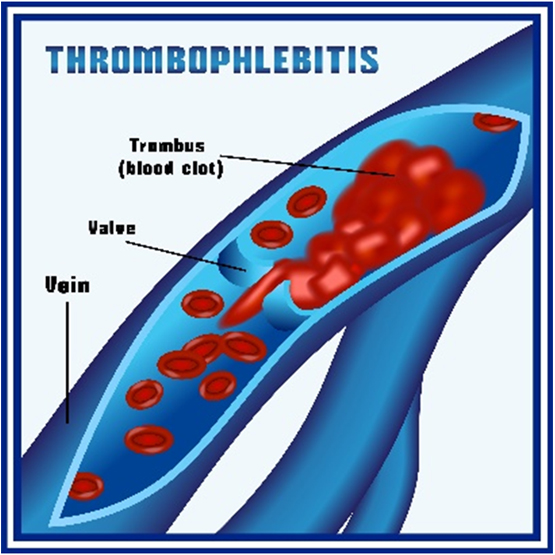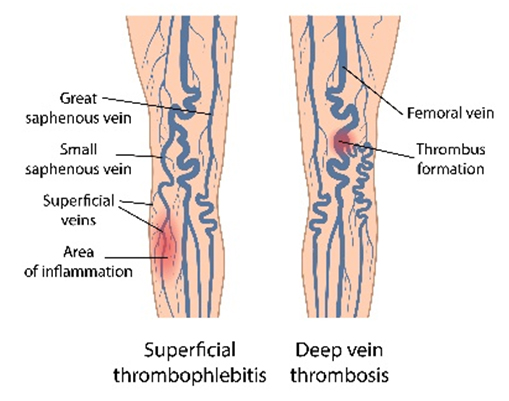Superficial Thrombophlebitis
Superficial thrombophlebitis (ST),commonly referred to as just “thrombophlebitis”, is one of complications of chronic venous insufficiency.
Despite the widespread believe, Superficial thrombophlebitis is not dangerous, yet quite unpleasant condition. It is commonly confused with deep venous thrombosis (DVT). DVT is dangerous indeed, since the blood clots can break off and be carried by the blood flow into the lungs, leading to pulmonary embolism (PE), serious and potentially fatal problem, caused by blockage of lung arteries.


Superficial Thrombophlebitis(ST) Vs Deep Venous Thrombosis (DVT)
ST and DVT are not related conditions. ST is the most common complication of venous insufficiency, presence of which excludes possibility of DVT. Resolved DVT, however, usually leads to development of so-called secondary venous insufficiency.
Other differences between ST and DVT are the following. ST, as its name implies, includes “thrombosis”, or blood clot, and “phlebitis”, which means inflammation. Because of this inflammation, ST causes not only swelling and pain, but also redness and tenderness to touch. Absence of inflammation with DVT explains swelling and pain being only its symptoms, but not redness or tenderness.
DVT is treated with “blood thinners”, called “anticoagulation medications”. ST does not require blood thinners, but rather special compression wraps or stockings, followed by the treatment of the disease responsible for venous insufficiency.
Start Your Journey To Feeling Good Again!
Schedule your Appointment Today with NYC's most Trusted and Comprehensive Vein Treatment Center

